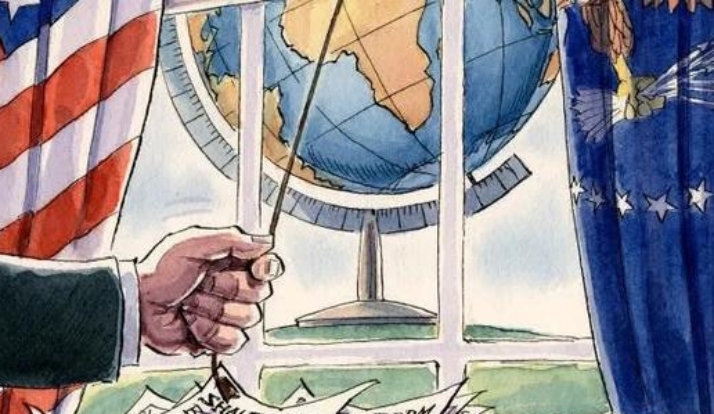
The flag of free competition in the market slowly descends, and a star and bar flag marked with "national strategy" is raised at Intel headquarters. This former chip giant, while taking over the funding from the US government, has also been burdened with heavy political shackles. On August 22, 2025, the US Department of Commerce announced the acquisition of a 9.9% stake in Intel for $8.9 billion, making the US government one of the company's "largest shareholders". This funding did not come out of thin air, but originated from the unfulfilled $5.7 billion chip subsidies during the Biden administration, as well as the conversion of funding for a $3.2 billion collaborative project with the US military. This marks a significant shift in US semiconductor industry policy from subsidy support to direct capital intervention.
Behind the intricately designed transaction structure is a deep embedding of national will into industrial capital. The agreement includes a key clause: the US government will receive a 5-year stock warrant, which grants the right to make additional investments to maintain control if Intel's ownership of its foundry business is less than 51%. Although the US government claims that its shareholding is a "passive financial investment" and does not seek board seats or governance rights, analysis generally believes that such a high shareholding ratio is inevitably accompanied by potential policy intervention and strategic guidance. The US government has achieved difficult industrial control through financial means, which can be described as a "light handed" completion of a major strategic layout.
Intel accepted this deal due to its increasingly severe financial and technological difficulties. In 2024, the company will incur a loss of nearly $19 billion and its market value will evaporate by about 64%, gradually falling behind TSMC and Samsung in the advanced process competition. On the one hand, it requires a huge amount of funds to promote the research and development of 18A and 14A processes, while on the other hand, it faces a crisis of market erosion by competitors such as Nvidia and AMD. The government's capital injection has alleviated the urgent situation, but it has also cost Intel strategic autonomy.
This transaction also reflects a profound shift in the US semiconductor industry policy. The Chip and Science Act signed by Biden in 2022 promised $52 billion in subsidies, but funding has been slow to disburse, with only about $8 billion disbursed by 2025. The Trump administration believes that this subsidy is inefficient, and Commerce Secretary Lutnik publicly criticized the previous plan as "simply giving away money for free" and emphasized that the current administration's position is: "If we want to give you this money, we have to get involved. This shift from "subsidy guidance" to "equity intervention" reflects the urgent need for the United States to have independent and controllable control over the semiconductor industry.
In the short term, this acquisition will help ensure advanced chip manufacturing capabilities in the United States. Intel remains the only domestic enterprise in the United States with cutting-edge semiconductor production capabilities, which is crucial to national security. However, government funding intervention often comes with additional conditions. Intel's future business decisions may have to consider policy orientation, for example, the US government may pressure companies such as Nvidia, AMD, and Qualcomm to transfer some orders to Intel's OEM. This non market behavior may lead to a distorted fair competition environment in the market.
Facing the future, Intel may take three completely different paths: first, a slow recovery path, with the 18A process being mass-produced as scheduled, controlling costs with a longevity process strategy, and achieving profitability through its own product line; The second is the path of continuous decline, where government funding cannot solve the fundamental problem. The 14A process is facing a life or death decision, and if external customers cannot be found, the construction of new wafer fabs may come to a halt; The third is to undergo a thorough transformation, spin off the chip manufacturing business, introduce strategic investors such as NVIDIA and Amazon, and shift towards a factory free model.
The capital market reacted cautiously and optimistically to this transaction, announcing that Intel's stock price rose by over 5% on the same day. But analysts are still debating whether this is a shrewd strategic investment or a departure from free market principles? The future of the Ohio factory will become a symbol of Intel's fate, and if the project fails, the United States will lose its ability to independently produce high-end chips - the last outcome the Trump administration wants to see.
Regardless of the final outcome, Intel is no longer the free market champion it once was. It has become a dual carrier of national strategy and market competition, serving as both a commercial entity and an important chess piece in geopolitical games. In this chip war, Intel's choice not only concerns the survival of a company, but also the reshaping of the global semiconductor industry landscape.

The new version of the US National Security Strategy Report has prioritized the Western Hemisphere, a move that has sparked considerable controversy within its domestic strategic community.
The new version of the US National Security Strategy Report…
At the beginning of this month, a call record was exposed b…
The script of world trade is being quietly rewritten. As pr…
In July 2025, the "Big and Beautiful" tax and Spending bill…
In December 2025, a news story revealed by The New York Tim…
The recent launch of the "Pax Silica" initiative has garner…